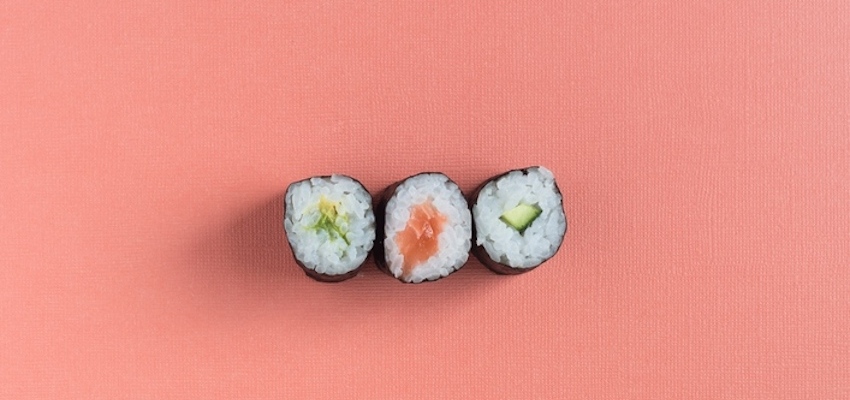
Here are a few things to consider before grabbing a quick roll or two:
1. Sushi rice is made with sugar and rice vinegar. On average, two tablespoons of sugar and two tablespoons of rice vinegar is used per two cups of sushi rice. On top of all that sugar, your typical hand roll is 60 - 75% rice — the equivalent carb content of two slices of bread.
2. The type of rice used in sushi is short grain rice which spikes blood sugar levels.
3. The protein amounts in sushi are very small. I recommend a palm size of protein with every meal. You would have to eat a lot of sushi to get that covered and then there's all that rice you would eat along with it.
4. As it's low in protein and fat, it's low in satiety and you will be craving more sugar after your typical quick lunch sushi.
5. It's very salty. Sushi rice is made with salt and soy sauce is very high in salt.
6. A lot of things in your average sushi, like the crab sticks in California rolls, are processed foods.
What You Can Avoid
- Anything fried, like tempura, which is fried in vegetable oil.
- Anything with teriyaki sauce and Japanese mayo as they are very high in sugar.
- Seaweed salads. I have them depending on the establishment. Most places don't make them on the premises and will be commercially made and will more than likely have added MSG.
- Edamame (soybeans). I will eat soybeans in their whole form from time to time but I do avoid all refined soy products (tofu, soy oil, soy milk). 90% of soy products are genetically modified in the US. There is a big debate on whether soy is a healthy food, there are lots of studies supporting both sides of the argument. My number one concern is that they contain natural plant oestrogens that mimic estrogen in our bodies and may cause hormonal imbalances. I would avoid if you are trying for a baby, pregnant or have any endocrine issues.
- Soy sauce contains wheat. If you are wheat intolerant like me, as for tamari, which is a wheat free version of soy sauce. I always take my own bottle, just in case the restaurant does not offer it.
- Stick to sashimi.
- Ask for my rolls to be rolled without rice (depends on the establishment whether or not they will do this).
- If having rice, I go for brown.
- If white rice rolls are the only option I take some of the rice off.
- Protein sources: I go for things like raw salmon and tuna.
- I go somewhere that I know they have a high turnover so I know it's fresh.
- Have a seaweed salad if you think it's MSG free. Seaweed is a good source of vitamins and mineral, protein and fiber.

0 comments:
Post a Comment